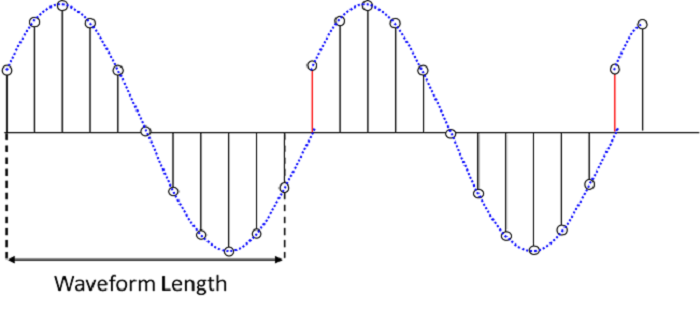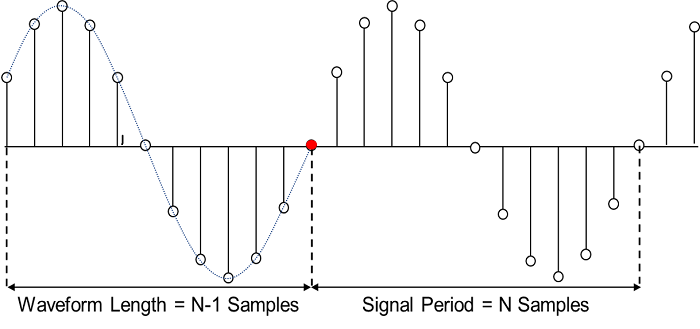
Confronting Measurement Uncertainty in Signal Generation - Part 1: Waveform Phase Discontinuity
Test equipment characterizes design performance and verifies devices under test function. To be effective, test equipment must outperform the devices under test. Minimizing measurement uncertainty attributed to test equipment requires careful consideration of all components in the test system.
This series of posts addresses how to minimize the uncertainty attributed to test stimulus of a measurement system. You will learn how to obtain the best signal quality for vector modulated signals using RF vector signal generators. Let’s start with baseband signal generation.
Baseband Signal Generation
Figure 1 illustrates a block diagram of an RF vector signal generator (VSG) which includes a baseband generator, an I/Q modulator, and an RF output section. The baseband generator uses a dual arbitrary waveform generator (AWG) to generate baseband I (in-phase) and Q (quadrature) waveform signals and control the playback sequence of waveform segments in the playback memory of the baseband generator. Before you play back the waveform segments, you need to know if the waveform segment will result in unexpected errors or not, such as phase discontinuity and interpolation overshooting.

Figure 1. A block diagram of an RF vector signal generator
What is Waveform Phase Discontinuity?
The most common AWG use case is to repeatedly play back a previously sampled waveform. When repeatedly play back the sampled waveform, an instant phase shift between the end of a waveform and the start of the next repetition is called waveform phase discontinuity. The instant phase shift can lead to periodic spectral regrowth and distortion.
For example, a sampled sine waveform in Figure 2 does not cover the entire period of the sinewave. When playing back the waveform repeatedly, a phase discontinuity appears at the transition point between the end of the waveform and beginning of the next retransmission.

Figure 2. A sampled sinewave waveform with a phase discontinuity
How to Avoid Phase Discontinuity
Waveform phase discontinuity happens between the end of a waveform and the start of the next repetition. So, by simulating an integer number of periods when creating waveform segments, you can avoid phase discontinuities for periodic waveforms shown in Figure 3.

Figure 3. Simulate a periodic waveform and repeatedly play back the waveform
If there are N samples in a periodic waveform, store only the first N-1 samples in the waveform segment as shown in Figure 4. When continuously playing back the segment, the first and Nth waveform samples are always the same, preserving the periodicity of the waveform.

Figure 4. Ensure samples are not repeated when playing back a waveform segment
If the waveform period exceeds the waveform playback memory available in the AWG, periodic phase discontinuity is unavoidable. If that is the case, select an option with a larger size playback memory for a long-period waveform.
For time division multiple access (TDMA) or pulsed periodic waveforms, resolve phase discontinuity by adding off-time at the beginning of the waveform, and subtracting an equivalent amount of off-time from the end of the waveform as shown in Figure 5. By making this adjustment, you can avoid spectral regrowth.

Figure 5. Simulate periodic TDMA or pulsed periodic waveforms
If the TDMA or the pulse periodic waveform has a longer pulse repetition interval (PRI), you can repeat the “off-time” waveform segment many times as shown in Figure 6. You do not need to simulate the entire period of the waveform. The waveform segment repetition allows you to reduce the use of playback memory and simulate a longer periodic pulse waveform.

Figure 6. Repeat “off-time” waveform to reduce the use of playback waveform memory
Summary
Using a dual arbitrary waveform generator is a flexible way to generate complex baseband waveforms. However, you need to understand the hardware structure and the requirements for waveform data to generate your desired waveforms. In order to reduce measurement uncertainty, you need to understand where errors come from and how to eliminate them.
Want to learn more about measurement uncertainty on waveform generation? Look for my next blog post on interpolation overshoot.
See related posts to learn about Confronting Measurement Uncertainty in Signal Generation: